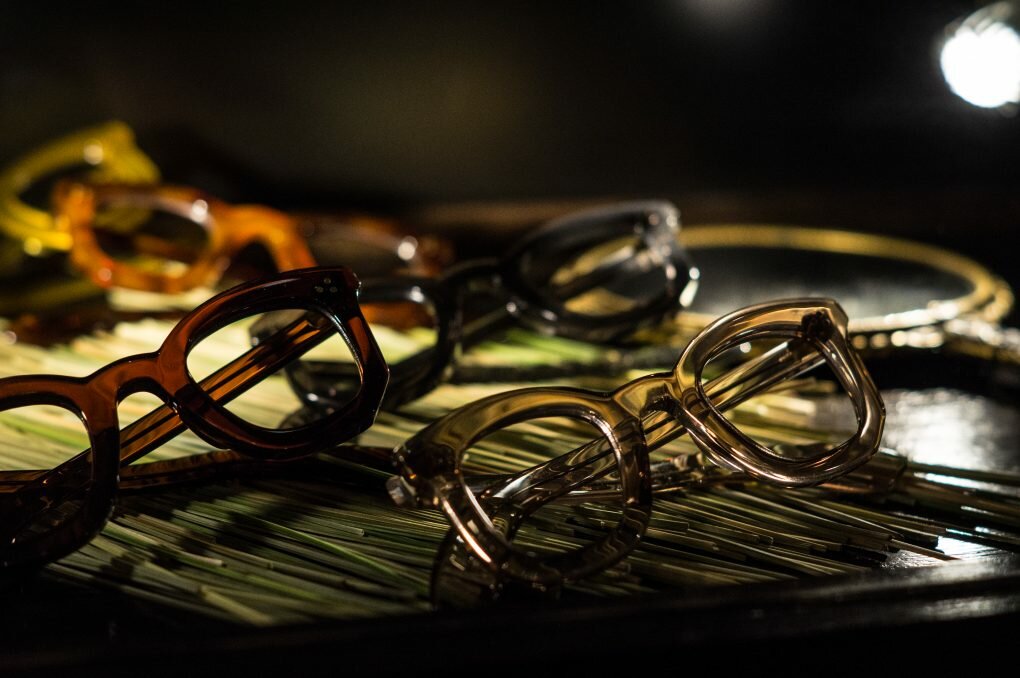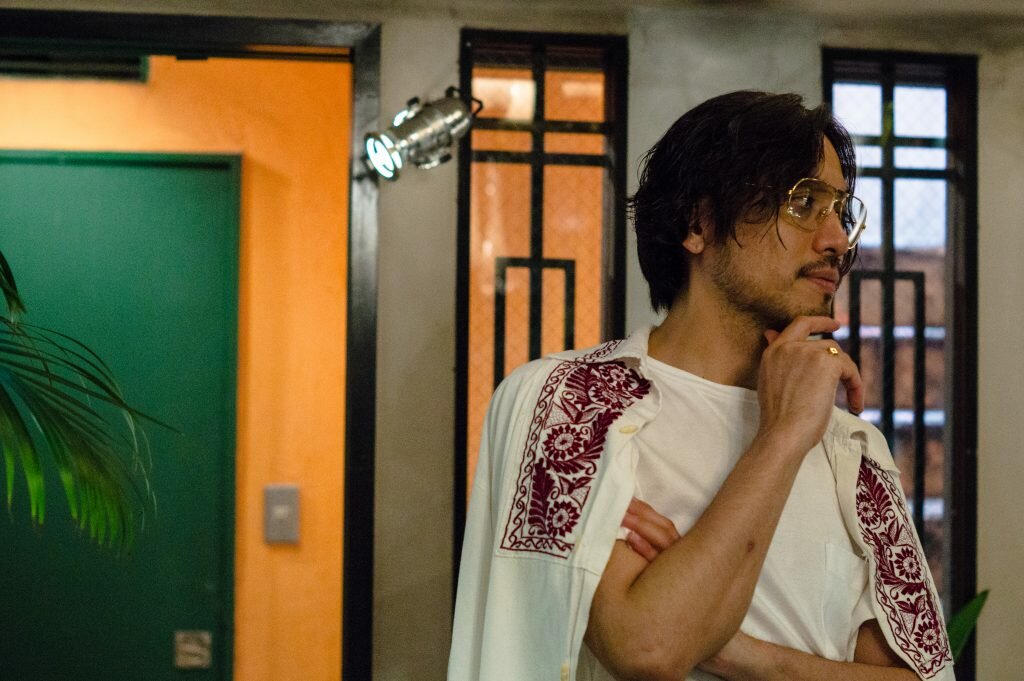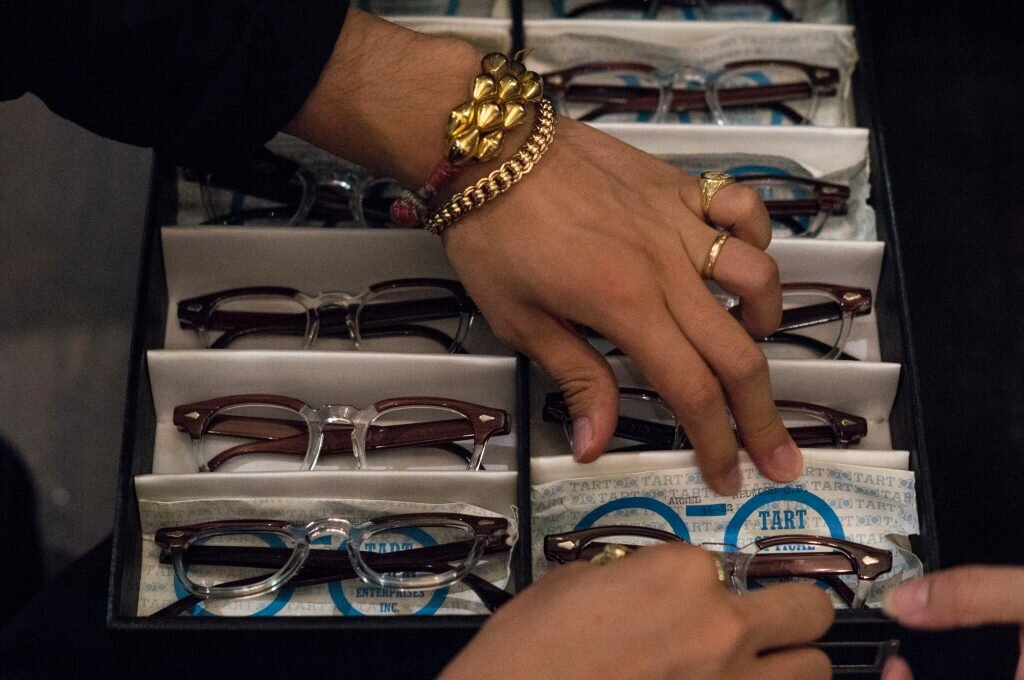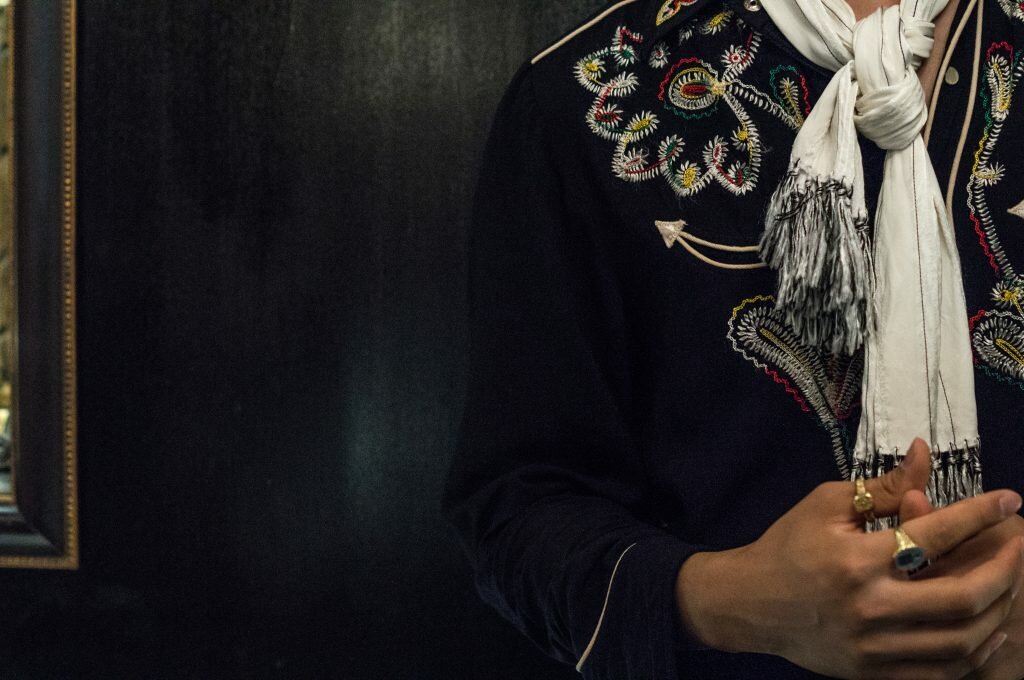Where John Mayer, G-Dragon and Kate Moss shop for sunnies.
He was only a teenager when he found his father’s stash. He was an awkward looking high school student – tall, frail, with embarrassing facial hair. Entering the master bedroom, he surveyed the area thoroughly to make sure his parents weren’t around. His father was a traditional man: a construction worker, and a son, who had followed in his own father’s footsteps.
Unsure of what he was going to find (or perhaps what he was thinking), he pulled open the wardrobe door and out tumbled jackets, trousers and 30 or 40 pairs of 1970s glasses. He gazed at a pair curiously, picked it up, tried them on, and looked at himself in the mirror. It was the first time he had ever seen vintage glasses.
Now 33, Tatsuya Okamoto runs Solakzade, an optical boutique specialising in deadstock frames.
The store, located in Shibuya, Tokyo, exudes Baroque bombast, 70’s funk and 80’s excess. Turntables pump jazz and hip hop, crystal chandeliers hang from the ceiling, and a green “S”, surrounded by a faux stone façade, is installed into the back wall. (And let’s not get started on the 60’s and 70’s paraphernalia).
The assistants, meanwhile, dress like they could be attending an anime convention. Matsu, a handsome bloke with neck length curls, wears a sequined ivory cape and amber aviators. At the back of the store, another assistant sits at a bench grinding lenses with monk-like focus, dressed in a white t-shirt and leather apron. And then there’s Tatsuya who, dressed in a sequined black Mexican shirt, white sneakers, and deconstructed wool trousers, looks likes a cross between a West Coast rapper, a mariachi and Captain Jack Sparrow.
The visual eccentricity reflects the store’s eclectic selection of glasses: over 10,000 pairs of vintage frames dating as far back as the 1800s.
The collection is famous, attracting the likes of G-Dragon, Kate Moss and John Mayer. “He [John Mayer] took so many of our forties or fifties frames,” Tatsuya says, walking over to a cabinet. He picks up a pair of tortoise shell glasses with trapezoidal lenses, thick rims and a protruding nose-bridge. “[Mayer] took this frame. It is from 40’s France. It has no sign but the brand name is Max Pittion. He liked it so much he met the family who owned the company and bought the copyright off of them to finally start his own brand.”

Tatsuya only deals in deadstock (or in layman’s terms, unused vintage frames). Deadstock is typically found in half-forgotten backrooms, basements and warehouse crates, instead of at flea markets, and is therefore often discovered in near-mint condition. Purists covet deadstock for several reasons. Firstly, deadstock frames are the precursors to modern designs, which means their designs are original and not derivative. Secondly, they have been kept in astonishingly good condition, despite their age, making them historical curiosities. And finally, as objects of nostalgia, they evoke visions of a past untarnished by the present. As such, where second-hand vintage frames are more like well-preserved artefacts, deadstock frames are more akin to living fossils, like the coelacanth or the red panda.
Sellable deadstock, however, is notoriously scarce. After decades in storage, acetate frames are prone to cracking. Furthermore, the moisture content of warehouse containers can exceed acceptable levels, which can cause metals frames to oxidise. As a result, Tatsuya will only accept four out of every ten frames he finds, and he will travel as far as Berlin, Paris and New York to source them.
Once they’ve been accepted he then rigorously assesses the quality. First, he confirms that the acetates exhibit no external or internal cracking, that the metals haven’t oxidised, and that the moisture content is sufficiently low to mitigate any further damage. He then restores them by buffing the frames by hand, replacing broken screws, and reshaping the acetate by gently heating it.
The oldest frames in-store are housed inside a hexagonal glass-topped table. He shows us a pair of 19th Century silver glasses about the size of a child’s fist. “Eighty-year-old and hundred-year-old glasses had 30 different sizes,” Tatsuya says, picking up the frames. He pulls out extendable band-slide arms that click into place. “This one is made of coin silver. Ninety percent silver, ten percent copper.” He turns the frames to the side to show us the narrow rims and uneven edges – traces of the hand hammering process used to shape frames during the American Civil War.

Unsurprisingly the obsession goes beyond simply sifting for deadstock. In his “downtime” Tatsuya manufactures and designs his own frames. The frames are a pastiche of modern and classic designs with the counter-cultural 60s and 70s serving as a primary source of inspiration. Hexagonal frames (originally worn by gangsters and radical intellectuals in the 20s, and later the hippies), Cartier Aviators, and classic frames from American Optical are some of his favourite shapes. But Tatsuya doesn’t limit himself. One of his frames, for instance, features 50-year-old English hinges, is inspired by the shape of glasses from the 1910s, and is made from a single sheet of 60s deadstock acetate.
An equally inspired standard of craftsmanship accompanies his designs. In a workshop above the store, his younger brother, Ryo, and a few young craftsmen make the frames by hand. The work is costly and laborious: a single pair requires three days work, leaving the total output at only ten pairs per month or one hundred and twenty pairs per year. “I have also been collecting old machines to make eyewear,” Tatsuya adds. “Fifty years old or forty-year-old machines. I like old machines because now current factories use 3D cutters and 3D printer so they are machine cut. But I like hand cut and hand polished and hand finished. Current factories are machine cut, machine polish and hand finished.”
Solakzade’s combination of modern and traditional techniques has generated wild results. When I ask Tatsuya if he has anything “very unusual” he smiles and leads us to a mirror in a gilded frame. To the left of the mirror is a lever which he pulls, causing the mirror swing open. Behind it and recessed into the wall is a glass shelf lit by an icy white LED. He reaches inside and retrieves a pair of glasses with emeralds embedded into the arms.
The frames are made of gold, Tatsuya’s favourite material. In the early 20th Century, gold was an expensive but common frame material valued as much for its lustre as for its chemical and physical properties. It is lightweight, corrosion resistant, and reflecting the high price of lenses in the 1900s, appropriately luxurious. “Gold has a feel. Of current brands, titanium is good, light and very hard to get rusted, but for me, not cool. No feeling or mood.”
Tatsuya also makes his lenses out of glass as he believes the mood of materials is essential. “Imagine cup glass, glass cup or plastic cup. Plastic is for children or cheap restaurant. So hard to break but less clear. Glass is more clear, and better texture. So like silk or cashmere: higher grade material.” Glass lenses were common before the 60’s when frames were much smaller so their weight was not an issue. The advent of sunglasses in 70s, however, promoted larger, coloured lenses, which popularised lighter and cheaper plastics. He picks up a pair and taps on the lenses. “You can tell difference by sound.” Glass lenses ring clear and crisp; plastic lenses flat and hollow.
Glass lenses also look more substantial than plastic as a result of their higher density. This gives them a visual heft that complements sturdier frames and is especially noticeable on smaller ones. Glass lenses – cold to the touch and heavy – imbue the face with an expressive quality that makes the wearer look (and feel) super-natural.
But Tatsuya likes to think of glasses, above all else, as talismans: objects with the potential to acquire a spiritual quality that transcends aesthetic and functional considerations.

Checking out his eclectic style, I ask him if he has always tried to dress differently to other men.
“Not try, but different. Yes actually, everything different.”
He points to his deconstructed trousers. “For example, this is Alexander McQueen” Then his braided shirt. “This is 50s vintage.” And then his white low-tops. “And this is Adidas 90s sneaker. Sometimes I even do RRL suit or sometimes tennis look – white polo shirt and shorts. So every day is different.”
And your glasses? What are those?
He takes off his gold Aviators and hands them to me. “This is 80s Cartier.”
I consider trying them on. “It’s very mixed.” I hand them back to him.
He laughs. “Yes, very mixed,” he says, brushing aside his ponytail and putting his glasses back on. “Mixed is my very important message and policy.”
Solakzade
Address: B1F Goro’s Bldg 4-29-4 Jingumae, Tokyo
Website: solakzade.com
Email:
Instagram: www.instagram.com/solakzade
Facebook: www.facebook.com/solakzade.optician
Special thanks to Ethan Newton for introducing us to the boys at Solakzade. Last day in Japan well spent.








